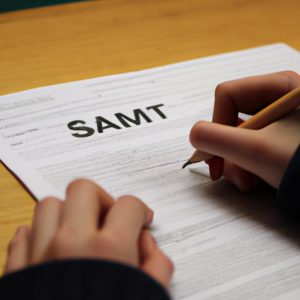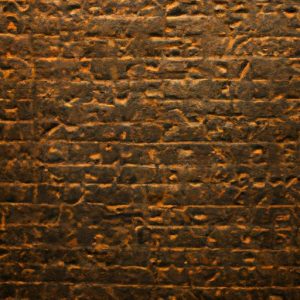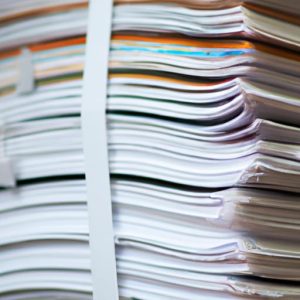Introduction to the Epic Mahabharata and Its Significance
The Mahabharata, one of the most revered and monumental epics in Indian literature, has captivated generations with its timeless tales of valor, honor, and divine intervention. This ancient epic, believed to have been composed thousands of years ago, holds immense cultural and spiritual significance for millions around the world. As we delve into the enigmatic authorship of the Mahabharata, we embark on a journey that unravels the mysteries surrounding this cherished masterpiece.
The Mahabharata, often referred to as the “Great Indian Epic,” is an extensive narrative that encompasses profound philosophical insights, intricate plotlines, and a vast array of characters. Spanning over 1.8 million words, this epic saga transcends the boundaries of time and space, immersing readers in a world of profound wisdom and moral dilemmas. Its teachings continue to resonate with people of all backgrounds, offering invaluable life lessons and insights into human nature.
Throughout the centuries, the Mahabharata has played a pivotal role in shaping Indian literature, culture, and spirituality. Its impact can be witnessed in various art forms, including theater, dance, and visual arts. The epic has not only inspired countless adaptations and retellings but has also provided a moral compass for individuals seeking guidance on their own life journeys. From the valor of Arjuna to the wisdom of Krishna, the Mahabharata’s characters have become archetypes representing diverse aspects of the human psyche.
In the following sections, we embark on a quest to uncover the elusive author of the Mahabharata, exploring various theories and perspectives that shed light on this enduring mystery. Join me as we venture into the realm of ancient scriptures and oral traditions, seeking answers to the question: Who truly authored the Mahabharata?
Stay tuned for Section II, where we delve into the captivating authorship debate surrounding the Mahabharata and explore the different theories that have emerged over time.
The Authorship Debate: Who Wrote the Mahabharata?
Unraveling the Theories and Opinions
The authorship of the Mahabharata has been a subject of intense speculation and debate among scholars and enthusiasts alike. Over the centuries, numerous theories have emerged, each presenting a different perspective on the origins of this ancient epic. Let us now embark on a fascinating exploration of these theories, shedding light on the enigmatic authorship of the Mahabharata.
Theory 1: Maharishi Vyasa – The Traditional Belief
The widely accepted belief attributes the authorship of the Mahabharata to Maharishi Vyasa, a revered sage of ancient India. According to this traditional belief, Vyasa is not just the author but also a central character in the epic itself. He is portrayed as the one who compiled and narrated the epic, with the divine assistance of Lord Ganesha. Vyasa’s profound wisdom and spiritual insights are said to have shaped the narrative, making the Mahabharata a reflection of his divine vision.
Theory 2: Multiple Authors or Anonymous Compilation?
Contrary to the traditional belief, some theories suggest that the Mahabharata may have been a collaborative effort involving multiple authors or an anonymous compilation over time. These theories propose that different sections of the epic were composed by various sages and poets, and later merged into a cohesive whole. The gradual evolution of the Mahabharata, they argue, allowed for the incorporation of diverse perspectives and narratives, resulting in its vast and complex structure.
Historical Context and Evidence
Exploring the authorship debate requires delving into the historical context and available evidence surrounding the origin of the Mahabharata. While concrete evidence is scarce, historical references and archaeological findings provide glimpses into the ancient roots of this epic. Some believe that the Mahabharata was composed around 400 BCE, while others suggest an even earlier timeframe. The epic’s oral transmission and subsequent written compilation over centuries make it challenging to pinpoint a single author definitively.
As we navigate through the labyrinthine maze of theories and historical context, we begin to comprehend the complexity surrounding the authorship of the Mahabharata. Join me in Section III, where we explore the traditional beliefs surrounding Maharishi Vyasa as the author of the epic, uncovering the significance of his role in this ancient saga.
Traditional Beliefs: Vyasa as the Author
The Widely Accepted Belief
One of the most prevalent and widely accepted beliefs regarding the authorship of the Mahabharata attributes its creation to Maharishi Vyasa. According to this traditional belief, Vyasa is considered the author and compiler of this epic masterpiece. Vyasa, a revered sage in Hindu mythology, is believed to have played a pivotal role in the narration and documentation of the Mahabharata.
Vyasa’s Role as a Sage
Maharishi Vyasa is revered as a sage of immense wisdom and spiritual insight. He is often depicted as a divine figure with profound knowledge of the past, present, and future. As the author of the Mahabharata, Vyasa is believed to have skillfully woven together the intricate plotlines, philosophical discourses, and moral dilemmas that define this epic saga.
Involvement in the Narration
According to ancient texts and folklore, Vyasa’s involvement in the narration of the Mahabharata goes beyond mere authorship. He is said to have acted as a witness and participant in the events depicted in the epic. It is believed that Vyasa received divine inspiration and guidance, enabling him to accurately document the dialogues, actions, and teachings of the characters who played pivotal roles in the Mahabharata.
Symbolic Representation
Vyasa’s role as the author of the Mahabharata extends beyond his physical presence. He is seen as a symbol of wisdom, insight, and the power of storytelling. Vyasa’s contribution to the epic is not limited to his role as an author but also encompasses his ability to impart profound spiritual and philosophical teachings through the narrative.
By exploring the traditional belief that attributes the authorship of the Mahabharata to Maharishi Vyasa, we gain a deeper understanding of the significance of this sage and his invaluable contributions to the epic. However, as we proceed to Section IV, we will delve into alternative theories that challenge this widely accepted belief, opening the door to a broader exploration of the Mahabharata’s authorship.
Alternative Theories: Multiple Authors or Anonymous Compilation?
Intriguingly, there are alternative theories that challenge the traditional notion of a single author behind the Mahabharata. These theories posit the possibility of multiple authors or anonymous compilation over a span of time. Let’s explore these intriguing perspectives and the evidence and arguments that support them.
Multiple Authors: A Collaborative Effort
One theory proposes that the Mahabharata’s vastness and complexity could be the result of collaboration among several authors. This viewpoint suggests that different sections of the epic were authored by different sages or scholars, each contributing their unique insights and narratives. Such collaboration would explain the diverse themes, writing styles, and philosophical perspectives found within the Mahabharata.
Supporters of this theory point to the distinct characteristics and variations in language, style, and tone throughout the epic as evidence of multiple authors. They argue that each author’s individual knowledge, experiences, and philosophical leanings shine through their respective sections, creating a harmonious yet diverse whole.
Anonymous Compilation: A Tapestry of Narratives
Another intriguing theory proposes that the Mahabharata may have evolved over time through an anonymous process of compilation. According to this perspective, the epic could have been a collective effort of scribes and storytellers who meticulously preserved and expanded upon oral traditions.
Proponents of this theory argue that the Mahabharata’s long and vibrant history of oral recitation allowed for the incorporation of various regional and cultural narratives. These narratives would have been woven together into a cohesive epic, resulting in the diverse range of stories, subplots, and characters that make up the Mahabharata.
Evidence supporting this theory lies in the existence of regional variations and alternate versions of the epic found across India. These variations, with their unique regional flavors and nuances, suggest a collaborative and evolutionary process of compilation rather than the work of a single author.
As we explore these alternative theories, it becomes evident that the authorship of the Mahabharata is a complex and multifaceted subject. Join me in Section V as we delve into the historical perspectives surrounding the epic, shedding light on the role of ancient scribes and oral traditions in shaping this timeless masterpiece.
Section V: Historical Perspectives: Ancient Scribes and Oral Tradition
The Power of Oral Tradition
The Mahabharata’s origin predates the advent of the written word, making it ripe for speculation about its authorship. One intriguing theory suggests that the epic might have been a product of oral tradition, passed down through generations by skilled storytellers. In ancient times, oral transmission of knowledge was a common practice, with bards and sages memorizing and reciting lengthy texts with astounding accuracy. Could the Mahabharata have emerged from this rich tradition of oral storytelling?
The Contributions of Ancient Scribes
While the Mahabharata may have been transmitted orally, it is likely that the involvement of ancient scribes played a crucial role in its preservation and dissemination. These proficient individuals, well-versed in the art of writing, would have meticulously transcribed the epic onto various mediums, ensuring its survival for posterity. The scribes’ contributions cannot be understated, as they bridged the gap between the oral tradition and written records.
Implications for the Authorship Question
If the Mahabharata’s composition was a collective effort involving oral tradition and the work of ancient scribes, it raises intriguing possibilities regarding its authorship. It challenges the notion of a singular author and presents the epic as a collaborative creation, shaped by the collective wisdom and storytelling prowess of numerous individuals across centuries. This perspective blurs the lines between individual authorship and the communal spirit of storytelling.
Furthermore, the involvement of oral tradition and scribes introduces the potential for variations and embellishments in different versions of the epic. Each recitation or written transcription might have incorporated nuances, interpretations, and additions from different storytellers and scribes, further enriching the narrative tapestry of the Mahabharata.
In the upcoming Section VI, we conclude our exploration of the Mahabharata’s authorship, contemplating the enduring mystery surrounding its origins and its significance for our understanding of this timeless epic.
Conclusion: Unraveling the Enigma of Mahabharata’s Authorship
As we conclude our exploration of the authorship of the Mahabharata, we find ourselves in awe of the enduring mystery that surrounds this ancient epic. The question of who wrote the Mahabharata continues to intrigue scholars, historians, and enthusiasts alike. While the traditional belief attributes its authorship to the sage Vyasa, alternative theories suggest multiple authors or anonymous compilation over time.
The Mahabharata’s authorship conundrum serves as a reminder of the complexities inherent in deciphering the origins of ancient texts. It highlights the interplay between oral traditions, historical contexts, and the evolution of narratives over centuries. Rather than seeking a definitive answer, perhaps we should appreciate the sheer richness and diversity of perspectives that surround this enigmatic masterpiece.
Regardless of its authorship, the Mahabharata’s significance remains undeniable. It stands as a testament to the profound wisdom and moral dilemmas faced by humanity throughout the ages. Its timeless teachings continue to inspire and resonate with individuals from all walks of life, transcending cultural and geographical boundaries.
In unraveling the enigma of the Mahabharata’s authorship, we embark on a journey that extends beyond the realms of historical documentation. It becomes a quest to comprehend the essence of human existence, the intricacies of morality, and the eternal struggle between good and evil.
So, as we immerse ourselves in the rich tapestry of the Mahabharata, let us revel in the beauty of its storytelling and the profound lessons it imparts. Whether penned by an individual sage or woven together by the collective wisdom of generations, the true essence of the Mahabharata lies in its ability to transcend time and touch the depths of our souls.
Join me in embracing the mysteries that surround this ancient epic, for in doing so, we embark on a quest for self-discovery and a deeper understanding of the human experience.
Thank you for accompanying me on this journey.




